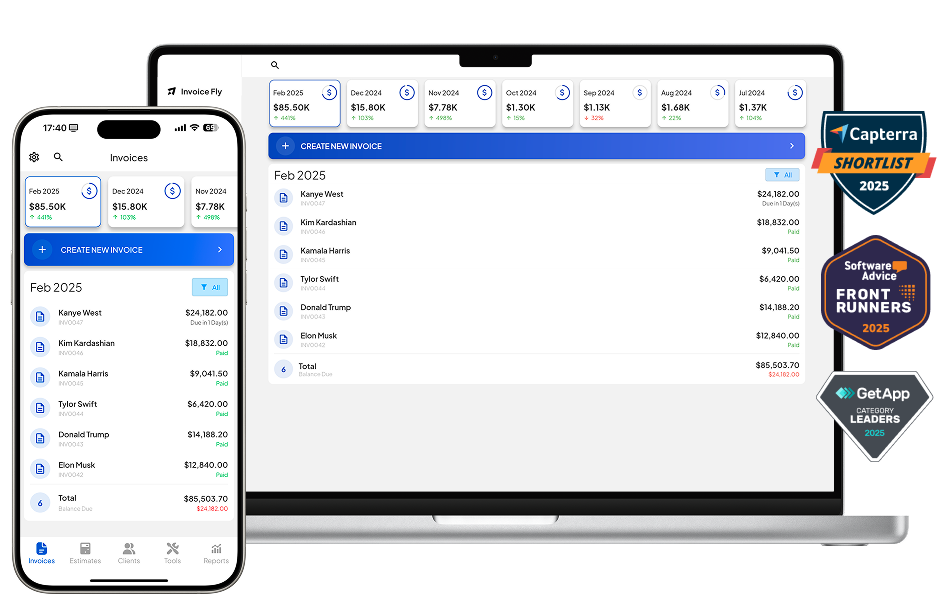- Home
- »
- Glossary Of Terms
- »
- Form W3
Form W-3 (Transmittal of Wage and Tax Statements)
Form W-3 is the Social Security Administration’s (SSA) transmittal form that summarizes all the Form W-2 wage and tax statements an employer files for a calendar year. It’s essentially the cover sheet that totals your employees’ wages, Social Security and Medicare wages, and the federal payroll taxes withheld.
What Form W-3 does
- Aggregates totals from every W-2 you issue (wages, tips, allocated tips, Social Security and Medicare wages, federal income tax withheld, etc.).
- Identifies the employer with legal name, address, and EIN.
- Transmits your W-2 file to the SSA (not the IRS). The SSA uses it to reconcile employee earnings and benefits records, and forwards the totals to the IRS.
Who must file
Any employer that paid wages subject to federal payroll tax during the year and issued one or more W-2s must file a W-3. This includes corporations, LLCs with employees, nonprofits, and household/agricultural employers when W-2 filing applies.
When and where to file
- Due date: Generally January 31 following the tax year.
- How to file:
- Electronically: Submit W-2 data via the SSA’s Business Services Online (BSO). The W-3 “transmittal” is included in the e-file — you don’t mail a paper W-3.
- On paper: Mail the red-ink scannable W-2 Copy A forms with a single paper W-3 to the SSA (not to the IRS). Keep copies for your records.
Key boxes you’ll report on Form W-3
- Employer info: Legal name, address, EIN, contact details.
- Total number of W-2s being transmitted.
- Wage totals: Box-1 wages, Box-3 Social Security wages, Box-5 Medicare wages, allocated tips (if any).
- Tax totals: Federal income tax withheld, Social Security tax withheld, Medicare tax withheld, Additional Medicare tax.
- State/local summaries if applicable.
Common use cases and examples
Example: A small business with five employees runs payroll all year. By January 31, it issues five W-2s (one for each employee) and files a single W-3 that summarizes: total wages for all five employees, total federal income tax withheld, total Social Security and Medicare wages/taxes. If filing electronically, the W-3 data is transmitted within the W-2 e-file.
W-3 vs. other payroll forms
- W-3 vs. W-2: W-2 is employee-specific; W-3 is the employer’s summary of all W-2s.
- W-3 vs. W-3c: W-3c is the corrected transmittal used with corrected W-2c forms.
- W-3 vs. Forms 941/940: Form 941 reports quarterly payroll tax liabilities; Form 940 reports annual FUTA. W-3/W-2 report actual wages and withholdings for employees.
How to complete Form W-3 (checklist)
- Gather all W-2 Copy A figures after your final payroll reconciliation.
- Verify employer details (legal name, address, EIN) match IRS/SSA records.
- Sum each W-2 box to produce W-3 totals (wages, Social Security/Medicare wages, taxes withheld).
- Review counts: number of W-2s, and any state/local entries if required.
- Submit via SSA BSO (recommended) or mail paper W-3 with W-2 Copy A by Jan 31.
- Retain copies and proof of filing for your records (at least four years).
Frequent mistakes that cause notices
- EIN or address mismatch with IRS/SSA records.
- Totals don’t equal the sum of all W-2s.
- Missing W-2s (transmitting W-3 without all employees included).
- Late filing after January 31, risking penalties.
- Paper mailed to IRS instead of SSA (W-3/W-2 go to SSA).
Why this matters for small businesses and accounting
Accurate W-3 reporting keeps your payroll tax data aligned with SSA/IRS records, reduces mismatch notices, and ensures employees’ Social Security earnings are recorded correctly. Even if you manage billing, invoicing, or accounts receivable in tools like InvoiceFly, your payroll process must still reconcile to the W-3/W-2 totals you transmit each January.
Note: This page is for general information only and is not tax or legal advice. Always consult current SSA/IRS instructions or a qualified professional.
W-2 vs W-3 vs 1099 (Quick Comparison)
These forms cover different reporting needs for U.S. payroll and non-employee payments. Use this side-by-side to pick the right one.
Form W-2 — Wage and Tax Statement
- Who receives it: Employees on payroll.
- Issued by: Employer to each employee and filed with the SSA.
- What it reports: Annual wages, federal income tax withheld, Social Security and Medicare taxes, plus state/local where applicable.
- When due: Furnish to employees and file with SSA by January 31.
- Use case: Employee compensation (not contractors).
Form W-3 — Transmittal of Wage and Tax Statements
- Who files it: Employers that file one or more W-2s.
- What it does: Summarizes totals from all W-2s (wages and withholdings) for the SSA. It’s the cover sheet.
- Where it goes: To the SSA (not the IRS). Included automatically when e-filing W-2s via BSO.
- When due: January 31 (same as W-2s).
- Use case: One W-3 per EIN per year to transmit all W-2s.
Form 1099 — Information Returns (Common: 1099-NEC, 1099-MISC, 1099-INT, 1099-DIV, 1099-K)
- Who receives it: Non-employees (contractors, vendors) and taxpayers with reportable interest, dividends, processor payments, etc.
- Issued by: Businesses, banks, brokers, and payment platforms; filed with the IRS and furnished to the recipient.
- What it reports: Non-employee compensation, rents/royalties, interest/dividends, payment card/TPP transactions, and other income.
- When due (typical): Furnish to recipients by January 31 (varies by type); IRS e-file deadlines vary.
- Use case: Payments outside payroll. No payroll tax withholding by the payer.
Key Differences at a Glance
- Employees → Issue W-2; summarize with W-3 to the SSA.
- Contractors/Non-employees → Issue the appropriate 1099 and file with the IRS.
- Destination: W-2/W-3 go to SSA; 1099s go to the IRS (recipients get copies in all cases).
Quick Decision Guide
- Did you run payroll and withhold taxes? Send each worker a W-2 and transmit totals with a W-3.
- Did you pay a contractor/vendor (not on payroll)? Send the relevant 1099 and file with the IRS.

FAQs Form W-3
Form W-3 is the SSA transmittal that summarizes all W-2s an employer files for the year (totals for wages and payroll taxes) and accompanies those W-2s to the SSA.
A W-2 reports an individual employee’s wages and withholdings. A W-3 summarizes the totals from all W-2s for the employer.
If you e-file via the SSA’s Business Services Online (BSO), the W-3 data is included in the electronic file and you can download a confirmation. If you file on paper, you’ll complete a physical W-3 from the official SSA/IRS forms.
No. W-3/W-2 are for employees (payroll). 1099 forms are for nonemployees/independent contractors.
Only employers file a single W-3 with the SSA; employees do not receive a W-3.
Missing or late transmittals can lead to SSA/IRS mismatch notices and potential penalties for late or incorrect information returns.
W-3 is the “Transmittal of Wage and Tax Statements,” a summary cover sheet for W-2 filings.
Most payroll providers generate W-2s and the corresponding W-3 automatically. In your provider’s year-end or “W-2/W-3” center, download the W-3 or e-file directly to the SSA.
The paper W-3 is a single red-ink scannable page with employer details and year-end totals that correspond to all W-2s being submitted.

Other Free Resources

Try Invoice Fly Today
- Send quotes & invoices in seconds
- Collect card & online payments
- Receive instant notifications
- Win more jobs

